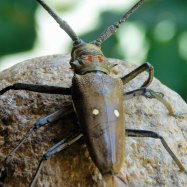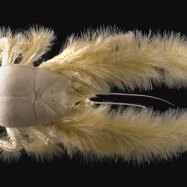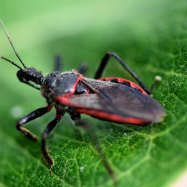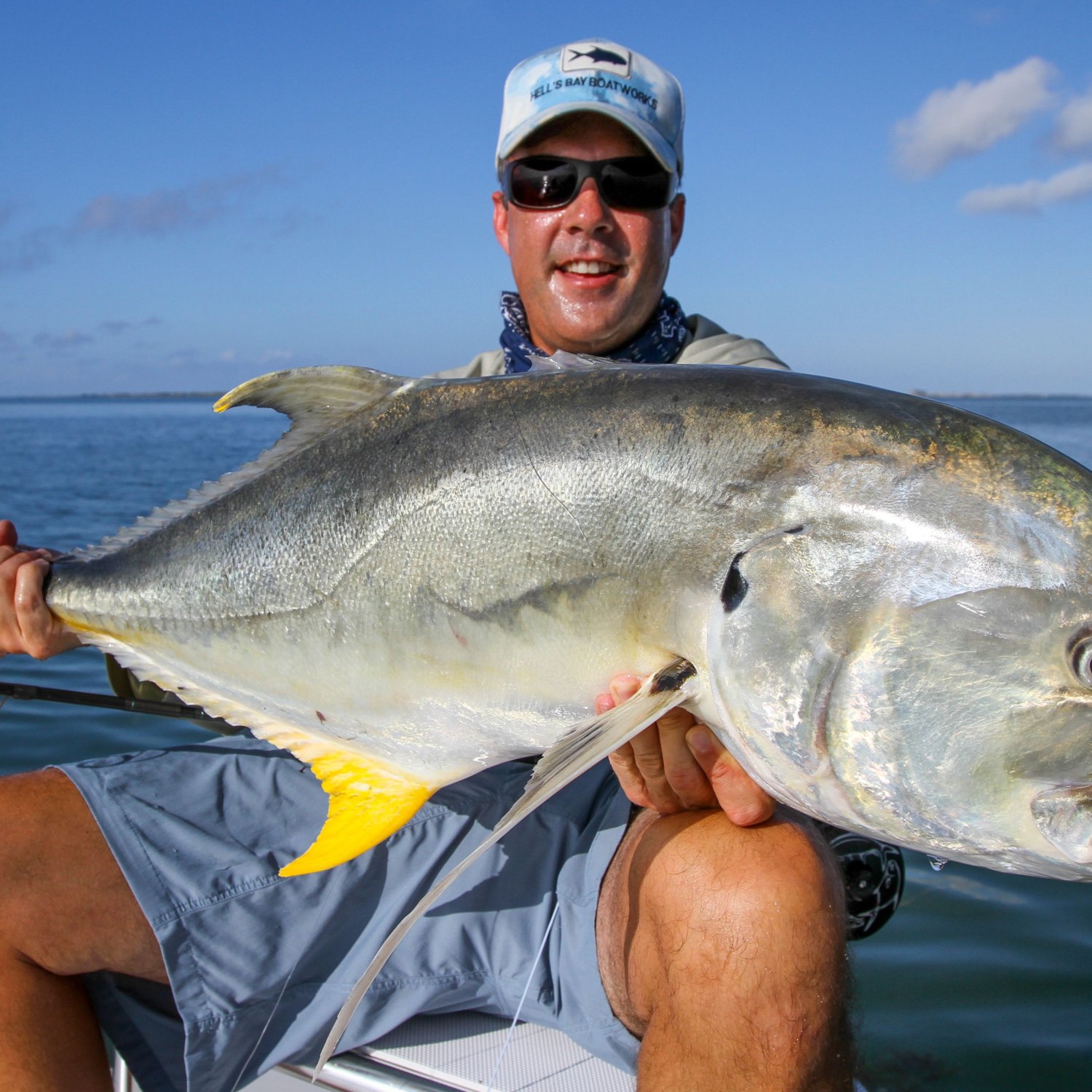
Jack Crevalle
Up to 3 feet
The Jack Crevalle, a fierce predator found in the Gulf of Mexico, can reach up to 3 feet in length. Part of the Carangidae family, their elongated and streamlined body shape helps them chase down prey. Keep an eye out for this impressive fish on your next ocean adventure. #JackCrevalle #GulfofMexico #Carangidae
Animal Details Summary:
Common Name: Jack Crevalle
Kingdom: Animalia
Habitat: Coastal waters
The Mighty Jack Crevalle: King of the Atlantic
The Atlantic Ocean is home to a vast array of aquatic creatures, from small and delicate to large and fearsome. Among these inhabitants, one often stands out with its impressive strength and striking appearance – the Jack Crevalle.Scientifically known as Caranx hippos, the Jack Crevalle is a member of the animal kingdom, phylum Chordata, and class Actinopterygii. This powerful fish belongs to the Perciformes order and the Carangidae family, known for its speed and agility in the water Jack Crevalle.
Found in coastal waters, the Jack Crevalle has a widespread geographical distribution, with its origins in the United States. However, it can also be found in other areas of the Atlantic Ocean, particularly in the Gulf of Mexico, where it is most abundant.
With its sleek and elongated body shape, the Jack Crevalle is perfectly adapted for life in the ocean. This predatory fish can reach up to 3 feet in length, making it one of the largest and most powerful in its family. But what sets this fish apart from others in its class are its impressive color and feeding behavior.
The Jack Crevalle's body is adorned in a stunning silver coloration, giving it a unique and eye-catching appearance. Its elongated and streamlined body shape also adds to its aerodynamic abilities, allowing it to swiftly maneuver through the water.
But don't be fooled by its beautiful appearance, as the Jack Crevalle is a fierce hunter in the ocean. As a carnivorous fish, it typically feeds on smaller fish, shrimp, and crustaceans, using its powerful jaws and sharp teeth to catch and devour its prey Javanese.
What truly makes the Jack Crevalle stand out is its incredible strength and speed. With its strong pectoral fins, it can reach speeds of up to 18 miles per hour, making it a formidable predator in the ocean. This fish also has a remarkable ability to jump out of the water, which it uses to escape from predators and to stun its prey.
But the Jack Crevalle's impressive capabilities don't end there. This fish is also known for its distinctive feeding methods. It often works in groups, herding schools of fish towards the surface of the water and taking turns slapping their tails on the water's surface, creating a loud noise and stunning their prey. This technique has earned them the nickname "bullheads" or "bull runners."
While the Jack Crevalle is mainly found in the Atlantic Ocean, it has also been seen in other parts of the world, including the Mediterranean Sea and even the coast of Japan. This widespread distribution is a testament to its adaptability and resilience in various environments.
Despite its widespread presence, the Jack Crevalle is not immune to threats. Overfishing and habitat destruction have greatly impacted its population, leading to declines in some areas. This species is also vulnerable to pollution and climate change, which poses a threat to its survival.
Therefore, it is crucial to protect and conserve this magnificent creature and its habitat. Efforts such as establishing marine protected areas and sustainable fishing practices can go a long way in preserving the Jack Crevalle's population and its role in the ocean's ecosystem.
In conclusion, the Jack Crevalle is a remarkable and magnificent creature that deserves recognition and protection. Its unique coloration, impressive size, and incredible abilities make it a king of the Atlantic and a valuable member of the ocean's community. Let us continue to admire and appreciate this fish and take action to ensure its future survival.

Jack Crevalle
Animal Details Jack Crevalle - Scientific Name: Caranx hippos
- Category: Animals J
- Scientific Name: Caranx hippos
- Common Name: Jack Crevalle
- Kingdom: Animalia
- Phylum: Chordata
- Class: Actinopterygii
- Order: Perciformes
- Family: Carangidae
- Habitat: Coastal waters
- Feeding Method: Carnivorous
- Geographical Distribution: Atlantic Ocean
- Country of Origin: United States
- Location: Gulf of Mexico
- Animal Coloration: Silver
- Body Shape: Elongated and streamlined
- Length: Up to 3 feet
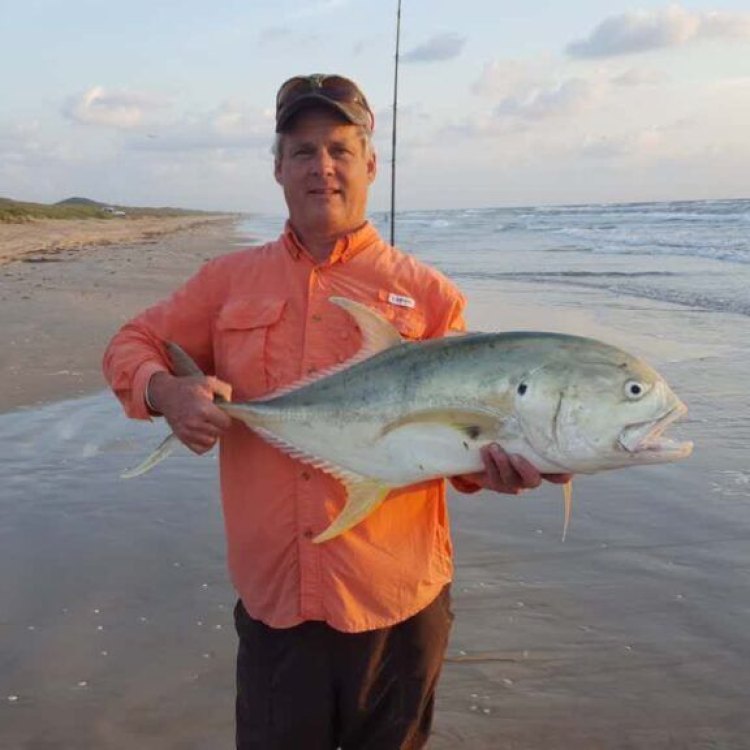
Jack Crevalle
- Adult Size: 10 to 30 pounds
- Average Lifespan: 10 years
- Reproduction: Sexual
- Reproductive Behavior: Spawning
- Sound or Call: No sound or call
- Migration Pattern: Migratory
- Social Groups: Solitary or small groups
- Behavior: Aggressive and fast-swimming
- Threats: Overfishing and habitat degradation
- Conservation Status: Least Concern
- Impact on Ecosystem: Keystone species
- Human Use: Sport fishing and food
- Distinctive Features: Black spot on gill cover
- Interesting Facts: One of the strongest fish for its size
- Predator: Sharks
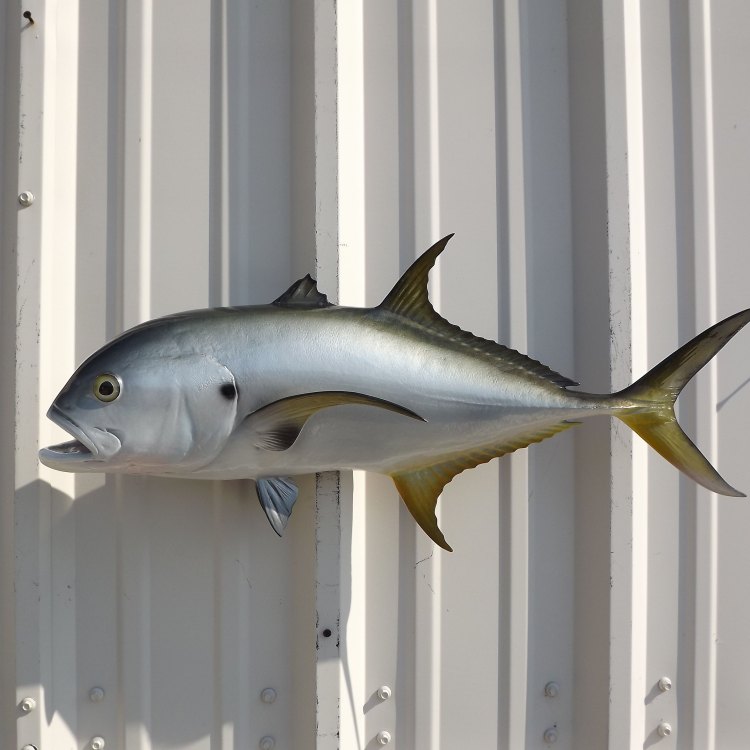
Caranx hippos
The Mighty Jack Crevalle: A Keystone Species in the Ocean
The ocean has always been full of wonder and mystery, and one of its most fascinating inhabitants is the Jack Crevalle. With its aggressive behavior, impressive strength, and unique features, this fish stands out among others in the sea. Found in tropical and subtropical waters around the world, the Jack Crevalle is a powerful and resilient species that deserves our attention and protection.Known scientifically as Caranx hippos, the Jack Crevalle is a member of the Carangidae family, which also includes popular game fish such as tuna and mackerel PeaceOfAnimals.Com. These fish can grow up to 10 to 30 pounds, with the average size being around 3 feet long. They have a lifespan of about 10 years, making them relatively short-lived for a fish species.
Reproduction among Jack Crevalles is sexual, meaning that they require a male and female to reproduce. Unlike some fish species, where females release eggs and males fertilize them externally, Jack Crevalles engage in spawning. This is a process where both male and female fish release their gametes simultaneously in the water, increasing the chances of successful fertilization.
One of the most fascinating behaviors of Jack Crevalles is their migratory pattern. These fish are highly migratory and are known to move long distances in search of food and suitable habitats. They can be found in both coastal and open water environments, and they often travel in large schools. However, they can also be seen swimming solo or in small groups Jackabee.
Despite their somewhat solitary behavior, Jack Crevalles are known to be aggressive and fast-swimming. They are opportunistic predators, feeding on a wide range of prey such as small fish, crustaceans, and squid. They can reach speeds of up to 40 miles per hour, making them one of the fastest swimmers in the ocean.
But while they may seem invincible, Jack Crevalles face several threats in the wild. Overfishing is a significant concern for this species, with their meat being highly prized by commercial and recreational fishermen. In some areas, they are also targeted for their large size and trophy potential. Another significant threat is habitat degradation, as these fish rely on healthy and diverse marine ecosystems for survival.
Despite these challenges, the IUCN (International Union for Conservation of Nature) lists the Jack Crevalle as a species of Least Concern. This status indicates that they are currently not at significant risk of extinction, although they are facing some population declines in certain regions. They are also not protected by any specific regulations or laws, leaving their conservation efforts in the hands of the fishing industry and local communities.
One of the reasons why Jack Crevalles are essential to their ecosystem is their role as a keystone species. In simple terms, a keystone species is one that has a disproportionate effect on its environment compared to its abundance. Jack Crevalles play a crucial role in maintaining the balance of their marine environment by controlling the population of their prey and serving as prey for larger predators.
Humans have also had a long-standing relationship with Jack Crevalles. In many coastal communities, these fish are an essential source of food, providing a nutritious and sustainable protein source. They are also prized by sport fishermen for their strength and fighting abilities, with many anglers pitting themselves against these mighty fish.
One of the distinctive features of the Jack Crevalle is the black spot on its gill cover, which gives it its alternate name, the black spot trevally. This mark is thought to be a form of camouflage, as it helps to break up the fish's silhouette when viewed from above. It also serves as a signal to other fish of the same species, as Jack Crevalles are known to form small groups for protection.
Another interesting fact about these fish is that they are one of the strongest for their size. Pound for pound, Jack Crevalles have a reputation for being fierce fighters, and even experienced fishermen are sometimes taken by surprise by their strength. They have powerful jaws and a muscular body, which they use to their advantage when fighting against predators or hooked by anglers.
Speaking of predators, Jack Crevalles do have a few natural enemies in the wild. As mentioned earlier, they are known to be preyed upon by larger predators such as sharks. Their impressive speed and agility are their greatest defense against these attacks, and they are also known to form tight schools for added protection.
In conclusion, the Jack Crevalle is an iconic and unique species that plays a vital role in our oceans. From their aggressive behavior to their impressive strength, they capture the imagination of people and have become a sought-after fish for sport fishermen. However, it is crucial that we also recognize the importance of their role as a keystone species and work to ensure their conservation for future generations to enjoy. Let us appreciate and protect these magnificent creatures as we continue to explore the wonders of the ocean.
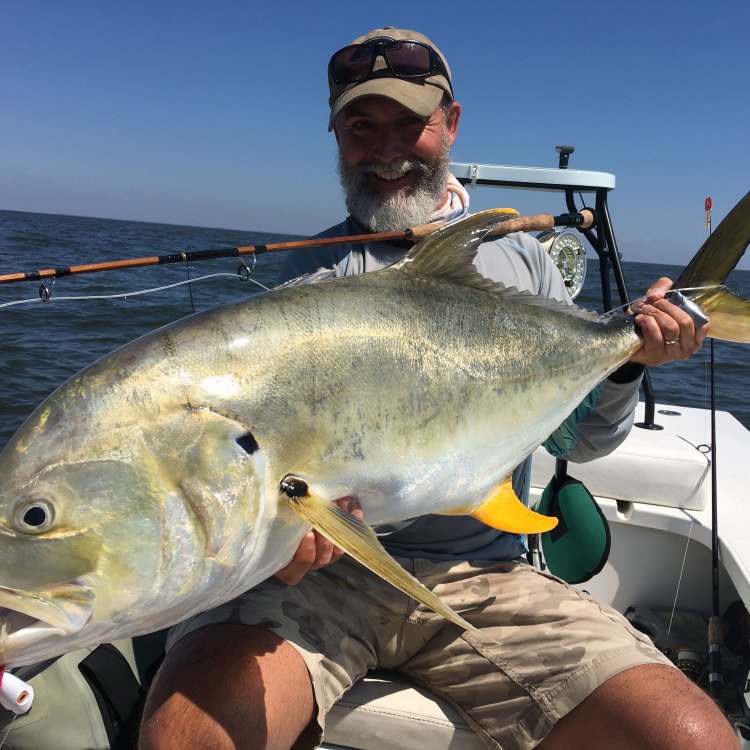
The Mighty Jack Crevalle: King of the Atlantic
Disclaimer: The content provided is for informational purposes only. We cannot guarantee the accuracy of the information on this page 100%. All information provided here may change without prior notice.


